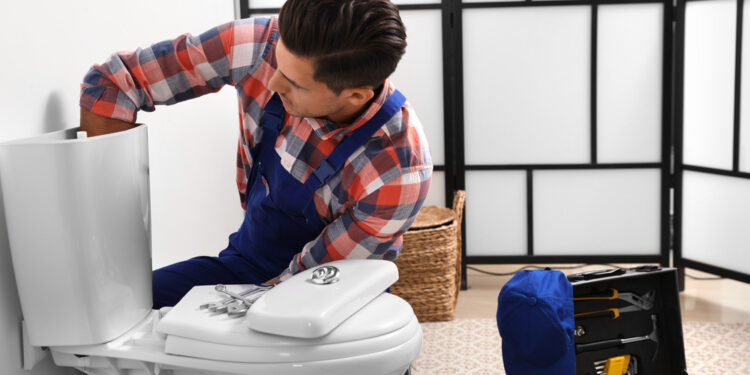How do you solve toilet issues at home? Homeowners have stories to share dealing with toilet nightmares. Most toilet problems usually arise during unexpected times. These include clogged and running toilets.
For convenience and to ensure proper repair, most homeowners hire a professional plumber Sutherland Shire or in their area to tackle toilet problems. If the problem is minor, you may also be able to fix it quickly using the right tools and do-it-yourself techniques.
In this article, you’ll learn how to resolve common toilet problems yourself. Keep reading!
- Use A Plunger To Unclog A Toilet
A slow-draining flush is an indication of partial or complete toilet drain obstruction. Clogged toilets are slow drainers, wherein the flush water fills the toilet bowl but doesn’t clear the waste. The high water level drains longer than usual. If you suspect this plumbing problem, it’s crucial to test the drainage and then use a plunger to unclog the toilet.
A plunger is a primary plumbing tool that every household must have. Apply a gentle plunge the first time. Because the bell is filled with air, forcing the plunger hard will pressure the air around the seal, blowing water out and all over.
After gently forcing the air out, you can forcibly plunge the toilet in and out to maintain the seal. Because this movement forces water in both directions, the clogs loosen. So, keep this movement several times as needed to remove the clogs. Alternate steady strokes and vigorous plunging. The toilet bowl should have adequate water to generate the perfect pressure to clear the obstruction.
You’ll need to pull up your toilet if the clog is difficult to remove. This plumbing task can take several hours to disassemble, fix, and reseal the toilet. You can hire a professional if you’re not prepared for this job.
- Check And Replace Parts For Toilet Leaks
Toilet leaks are a major plumbing disaster that can significantly disrupt the normal routine of homeowners, especially when caused by a burst pipe. Unfortunately, most homeowners insurance doesn’t cover constant leaks from a lack of plumbing maintenance.
Toilets leaks may occur because of rusted pipes, loose or worn-out seals, damaged flapper, or crack or condensation on the bowl or tank. If you notice the flapper is loose or not settled properly into the valve, tighten the flapper or replace the gasket to stop the leak.
Check the valve if it’s loose and screw it firmly to stop the leak in the overflow tube. Water can overflow or leak from the toilet because the valve isn’t tight enough to obstruct water when the tank is full.
- Replace The Faulty Fill Valve Of A Whistling Toilet
A loud, whistling tank isn’t normal. It’s a tell-tale sign that your toilet fill valve is faulty. Toilet valves fail over time, causing whistling sounds in tanks and causing more disturbance than comfort. This problem also causes high water consumption, causing your utility bill to skyrocket. The best solution to stop a whistling toilet is to replace the deteriorating toilet valve.
- Inspect Damage When Toilet Makes Refilling Sounds
Have you encountered a tank refilling on its own in public bathrooms? It’s called ghost flushing. This plumbing problem can significantly increase water bills.
A toilet refilling can result from an internal or external leak. External leaks are obvious, wherein you see visible water on the bathroom floor, whereas internal leaks are deep within the tank. So, how do you fix leaks to prevent your toilet from refilling on its own?
Inspect the refill tube for correct installation. Remove and reinstall the refill tube if it’s far from the overflow pipe to avoid an internal leak. Also, replace a worn-out flapper to resolve the problem. If these steps fail, the last resort is replacing the entire flush.

- Use A Plumbing Snake For A Low Toilet Water Level
A sewer vent line runs through the bathroom walls and the roof, requiring free airflow to regulate pressure in your household plumbing system properly. If the plumbing vent has a block, it causes a drop in the toilet’s water level. Ensure a smooth water flow in the pipes by using a plumbing snake to dislodge any clog obstructing the plumbing vent.
Conclusion
As discussed above, you can resolve common toilet problems using the correct plumbing techniques and tools. Continue to equip yourself with the proper information to address common plumbing problems. However, if a toilet problem is way out of your control, hire an experienced and licensed plumber. That way, you’ll know that the issue is resolved correctly without early reoccurrence.




